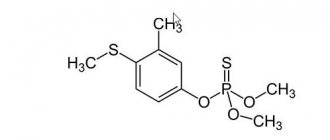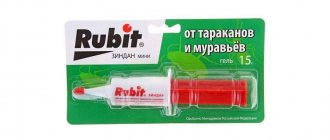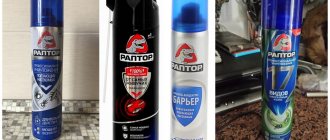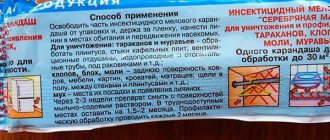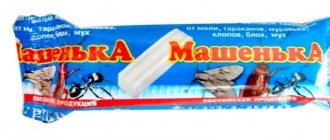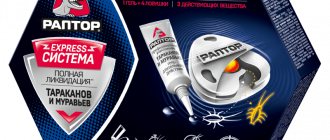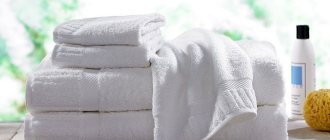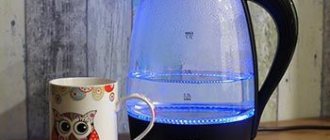There are plenty of harmful insects in nature. Some attack apartments and houses. But most of them damage plantings in the garden and vegetable garden. We will not list all types of insect pests.
Let’s focus on one of the most dangerous – bedbugs. Creatures can live in nature and at home. Quite resistant to poisons that are commercially available. Because of this, chemists have a hard time.
It is necessary to constantly create a lot of new substances. The drug Karbofos solves problems with “uninvited guests” that damage greens and healthy crops.
It differs in the greatest effectiveness from other pest control products. And especially bedbugs. The main task of the gardener remains to fully study the instructions for use, composition and other important points.
Description of the drug
For many years, the drug karbofos remains one of the most effective means of pest control both in agriculture and in everyday life. It is based on malathion, which was invented in the USSR in 1952 and immediately gained popularity. The insecticide has a strong contact-intestinal effect on insects, while it is moderately toxic for plants and people.
Karbofos has a sharp, characteristic odor and mixes well with water. When finished, the liquid is oily and colorless. The substance is very volatile and evaporates quite quickly at high temperatures.
Bottom line
Karbofos is a widely known and frequently used insecticide for treating garden plants and residential premises against insect pests. It equally effectively eliminates blood-sucking and leaf-eating insects. If you do not abuse the use of this pesticide, then insects do not develop resistance to it: they do not get used to it.
The chemical formula is based on malathion, a potent poison of organic origin. Malathion is the main substance not only for the creation of karbofos, but also other insecticides and pesticides. You can choose a less toxic drug with a similar effect and no pungent odor.
Sources used
- Melnikov N. N. Pesticides. Chemistry, technology and application. - M.: Chemistry, 1987.
- Medved L.I. Handbook of pesticides (use hygiene and toxicology) / Team of authors, ed. Academician of the USSR Academy of Medical Sciences, Professor L.I. Medved
- <Gruzdev G.S. Chemical plant protection / Ed. G. S. Gruzdeva. — 3rd ed., revised. and additional.. - M: Agropromizdat
- Wikipedia article
Composition and release form
The composition of karbofos includes active and ballast substances. The high concentration of melathion as an active ingredient allows it to kill insects while remaining relatively safe for pets and people. In addition to the base, biodegradable surfactants and fragrances with an unpleasant odor are added to the drug as a means of protection against accidental poisoning.
Powder
You can buy the drug in different forms:
- Karbofos powder. Includes 10% Melathion. Available in bags of 30, 60 g, 1 and 5 kg.
- Emulsion concentrate with 50% active substance content. It goes on sale in plastic canisters of 1 and 5 liters.
- Karbofos in ampoules of 5 and 10 ml is produced in the form of a suspension.
- Granules and tablets. To prepare liquid karbofos, you must strictly follow the instructions.
Application against ants
These insects are distinguished by complex behavior, collective intelligence and high vitality. To revive the anthill, they will need only 5-6 pieces of “surviving” eggs.
To treat 100 m2 of area, you will need a 60 g pack of powder, which is diluted in five liters of water. Treatment is carried out on the ground, not on plants. You need to track down the entrance to the anthill and block it with a mixture of karbofos suspension and water. If there are several entrances to the anthill, you need to divide the resulting volume of karbofos slurry into several parts.
In addition to using liquid gruel, you need to add powdered karbofos: it is scattered at the entrance to the anthill in a volume of 30 g. If there are two or 3 entrances, this mass is divided into 2 or 3 parts.
Operating principle
In the insect's body, malathion breaks down and releases the more aggressive poison malaoxon. This occurs mainly in cold-blooded animals. Also, this drug, upon direct contact, paralyzes the pest, which leads to death. The product acts faster on larvae than on adults, which is explained by the incompletely formed outer integument.
With constant use of the drug, surviving insects begin to produce a special enzyme that neutralizes the poison. Therefore, before using karbofos to destroy pests on a site or at home, you need to find out whether pesticides containing an organic phosphorus compound have been used in this area.
Analogs
How can you replace karbofos in the garden? Common analogues of the drug are the following:
- Fufanon;
- Combat;
- Anti-mite;
- Alioth KE;
- Medilis-Malathion;
- Preventative;
- Carbocin;
- Intra-Vir;
- Alatar;
- Kinfos;
- other.
Combat
A modern insecticide whose action is aimed at eliminating bedbugs and other domestic insects. This product is safe for people and pets; it is used to treat premises in kindergartens, hospitals, and other institutions. Also used for disinfestation of residential buildings and apartments.
Fufanon Super
(Malathion based) is used to kill domestic parasites. Unlike Karbofos, it is less toxic. To eliminate garden insects, the drugs Fufanon Nova and Fufanon-KE are used. The drug belongs to the contact-intestinal poisons that act on insects after penetration. Fufanon can be combined with fungicides that are used to protect garden crops from diseases. It is not recommended to process the berries due to the unpleasant odor.
Anti-mite
The product is also low-toxic and contains toxic substances in moderate quantities. The drug is based on malathion and is intended to eliminate arachnids. But the chemical formula of the drug also works with other types of parasitic insects. The insecticide acts by contact-intestinal method: it penetrates the body of insects through the food tract and integument. Despite its low toxicity, you need to work with the drug in protective clothing and follow all safety precautions. The duration of the drug is 2 weeks. All this time, the parasites will die upon contact with the treated plants.
Alioth CE
A new generation insecticide, a complete analogue of Fufanon and Karbofos. Affects parasites during contact with plants and when eating leaves. It also partially has a fumigation effect: parasites die from the fumes of the poison. The product is harmful to both adult parasites and larvae of parasites. The solution is resistant to watering and rain, low temperatures: it does not lose its properties.
Prophylactic, MCE
A universal product that is used to protect plants from pests in early spring. The product is based on malathion with the addition of mineral vaseline oil. The drug is active against overwintering parasite eggs, which is especially important in the spring. The poison malathion penetrates the body of parasites through the contact-intestinal route; the oily substance envelops the body of the insect with a thin film and leads to suffocation. In larvae, the drug dissolves the protective shell, which leads to their death. Prophylactic is also used as a fungicide, as it blocks the germination of phytofungal spores. The Prophylactic formula is valid for 30 days.
Carbocin
A highly effective product for protecting garden crops from insects and their larvae. Release form: instant tablet containing urea (karbofos). Acts on insects by contact-intestinal route. The tablet contains malathion and cypermethrin.
Inta-Vir
It is an analogue of Karbofos in its mode of action on insects: it is a nerve poison that leads to death due to blocking nerve impulses between the cells of the body. The parasites stop feeding within 30 minutes after exposure and die within 24 hours. The developers claim that the drug has a detrimental effect on 52 types of insects. The advantage of Inta-Vir over karbofos is the absence of a pungent odor. Therefore, the drug is used to treat berry bushes that are susceptible to foreign odors. Flaws:
- does not affect insect eggs;
- ineffective against insects with dense shells;
- capable of destroying beneficial soil microfauna when released onto the ground.
Also, the drug is quickly washed off by rain and watering; the waiting period for action sometimes reaches three days. Despite these disadvantages, Inta-Vir is widely used in homestead farms.
Alatar
Contains malathion and cypermethrin. The release form is a concentrated emulsion, the method of exposure is contact-intestinal. The drug destroys and repels insects, reliably protecting crops from their aggression. The resistance and short duration of action of malathion are successfully compensated by cypermethrin, which persists on surfaces for up to thirty days. This substance is not destroyed by ultraviolet radiation and high temperatures. When processing plants, it is recommended to wet the leaf plates from the back side as well.
Kinfos
Analogue of Karbofos without malathion content. The drug has a nerve-paralytic effect on insects, penetrating into the digestive tract and through the integument. The product contains dimethoate and beta-cypermethrin. It has a double effect on parasites: on the food tract and on nerve impulses. Thanks to this, Kinfos leaves no chance for insects to survive.
Less toxic drugs
Karbofos is a moderately toxic substance, but new generation drugs have a low percentage of toxic substances. This:
- Diazinon;
- Imidacloprid;
- Permethrin.
Diazinon is used for disinfestation of premises, treatment of hair of domestic and farm animals. Does not accumulate in the cells of warm-blooded organisms. It acts on parasites in a contact-intestinal manner. Partially has a systemic effect, that is, it penetrates into the structure of plants. However, it is not phytotoxic.
Imidacloprid is a synthetic analogue of nicotine, but is characterized by less toxicity. The drug is used to combat insects in gardens, greenhouses, indoors and for treating pet hair.
Permethrin is a synthetic pesticide. Field of application: extermination of parasitic insects: lice, nits, fleas, garden pests. It has a nerve-paralytic effect, blocks nerve impulses between the cells of the body.
Purpose and areas of use
Due to the fact that karbofos has a broad insecticidal and acaricidal effect, it is used in various fields to get rid of insects:
- In forestry areas - to combat tree pests and ticks.
- In plant growing - to destroy insects that can cause damage to plantings, crops and seed banks.
- In livestock farms - to get rid of ecto- and endoparasites.
- In medicine – for disinfestation of premises.
- In everyday life and trade, karbofos is used as a remedy for bedbugs, cockroaches, flies, and ants.
Common taxes
Karbofos against bedbugs and other insects has something in common with a number of other remedies. Drugs from different brands share the same active ingredient. It is included in many popular products. Analogues of the drug Karbofos:
- Fufanon
- Medilis malathion
- Alatar
- Aliot
- Anti-mite
- Kemifos
- Novaction
- Phenaxin
- Preventative
The composition of these funds varies. In addition to the active substance, other insecticides can be used simultaneously. The duration of action, level of effectiveness, and area of action of the drug depend on this. In addition, the composition, release form (powder, emulsion) and concentration of the main components are factors that determine the degree of effectiveness of the insecticide.
Protection against domestic pests
When parasites appear in an apartment, the question often arises of which remedy will be the most effective. The advantage of karbofos is that it will immediately help against cockroaches, ants, and bedbugs. It also saves from fleas, especially if there are free-ranging pets in the house.
Pests
The affordability of karbofos, simple instructions for use, and the ability to use it yourself at home make it attractive to many people. For treatment, you only need a spray bottle so that the drug can get into hard-to-reach places.
How to use karbofos against bedbugs?
The convenience of using karbofos against bedbugs is that, even if not all nests are found, the parasites, running over the treated surfaces, still receive their dose of poison.
To kill insects, it is better to use a solution than dry powder. In liquid form, it is more likely to get into narrow crevices and nooks where parasites can hide.
Before treatment, the room should be tidied up, wet cleaned, and furniture should be moved to the center of the room.
Preparation of the solution
Karbofos against bedbugs should be diluted as indicated in the instructions. If you change the proportions, it may turn out that the concentration of poison is too low to destroy the colony. You can increase the dose of insecticide if there are too many parasites.
To prepare working emulsions, the product is diluted with water at room temperature, stirring evenly. The calculation of the amount of concentrate required to prepare the solution differs depending on the form of release of karbofos. The packaging indicates not only the proportions of water and the drug, but also the required amount for the size of the treated area.
After this, the prepared solution is poured into a spray bottle. The calculation of the required quantity should be done based on one-time use, since it is undesirable to store it.
Treatment
Before you start baiting bedbugs directly with karbofos, you need to take care of your own safety. Clothing must cover the skin, and the use of personal protective equipment (PPE) is mandatory.
Instructions for using karbofos against bedbugs advises:
- Spray the room with the windows and doors closed.
- Start processing from the far corner from top to bottom, gradually moving towards the exit.
- Smooth surfaces are sprayed once. Soft elements that easily absorb moisture are re-treated.
- Pay special attention to baseboards, wallpaper joints, if they have peeled off, remove sleeping places and furniture nearby.
At the end of the work, the room is left closed. After some time, ventilation and surface cleaning are carried out. The death of most insects occurs within 3–5 hours, the rest die within two weeks.
Treatment
Reapplication
Due to the fact that not all bedbug clutches die during the initial treatment, spraying must be repeated after about 14 days. During this time, new larvae will hatch, and the effect of karbofos sprayed on the surface will weaken.
General cleaning using alkaline products is carried out only two months after re-treatment.
Preparing the premises
This is the most time-consuming procedure, but at the same time the most important. You will need:
- All furniture must be moved away from the walls so that there is access to the baseboards and walls around the entire perimeter.
- You need to sweep the apartment and remove dust. Be sure to pay attention to the areas behind cabinets and other furniture. Remove up cabinets, ceiling skirting boards, and cornices.
- Next you need to carry out wet cleaning. This will prepare the surfaces for applying the solution. If it is applied to dust, it will mix and significantly reduce effectiveness.
- You will need to review all the things in the closets. Quite often, bedbugs lay eggs in them. If masonry is found, the items need to be washed and ironed. Place clean items in bags and close them.
- Remove bed linen, bedspreads, curtains, drapes, tulle and other textiles. Wash everything and be sure to iron it, as it requires exposure to high temperatures.
- Clear the room as much as possible from things, surfaces should be open.
- It is advisable to remove things from the premises during the procedure.
- If treatment is carried out in winter, then it is ideal to take furniture, carpets and other large things outside; severe frost kills bedbugs.
- Be sure to hide food, put it in bags or containers that are hermetically sealed. Do the same with personal hygiene items.
Of course, each type of karbofos must be diluted according to the instructions and use the proportions indicated in it.
If powder is used, you will need:
- You should take a container that you can then throw away.
- Pour into water.
- Add powder.
- Mix thoroughly until all the powder is dissolved.
- Take a spray bottle and pour the solution.
Work only in protective equipment.
Treatment
During this procedure, it is very important to treat areas where parasites are located or are likely to appear. This will maximize the chances that the insect will make contact with the product.
Pay attention to the following places in the room:
- Skirting boards, cracks on walls, spaces under wallpaper, cracks near ceiling skirting boards and cornices.
- The space under the window sill and behind the radiator.
- Side and back panels of cabinets, beds, chests of drawers and other furniture.
- Necessarily, the lower part of the beds, niches of sofas, all mechanisms.
- The backs of wall clocks, paintings, and any other decor.
- Door and window openings.
- Ventilation outlets.
At the end, you need to take off your clothes (be sure to wash them), wash your hands, and take a shower. Leave the premises for 2 or 3 days. Remember that there must be a draft in a closed room for toxic fumes to escape. Upon return, the procedure is repeated and the apartment is left again for 2-3 days.
Then you need to carry out wet cleaning using a soap or soda solution. To do this, dilute soda or laundry soap in water, which will help neutralize the chemicals. Surfaces with which you will come into contact are processed. Door handles, tables, chairs, and more. General cleaning is carried out 2 months after the procedure.
Protection against garden pests
Karbofos allows you to rid your garden plot of almost all pests. The drug helps:
- from aphids;
- from codling moths;
- from ticks;
- from all types of bedbugs;
- from weevils;
- other insects.
We must not forget about the timing of processing, otherwise you may be left without a harvest, destroying beneficial pollinators, such as bees, along with pests. Fruit, berry and vegetable crops are sprayed with a solution prepared according to the instructions; granules are used for cultivating soil in greenhouses.
Work is carried out early in the morning in calm weather at a temperature not exceeding +150C. Rain can destroy all the benefits of karbofos, so first you need to check the weather forecast.
Treatment of garden trees
The garden is treated with karbofos in the spring, when insects wake up after hibernation. The volume of the finished solution is calculated based on the culture and age of the plant. Young trees need an average of 2 to 5 liters, and mature trees - 10 liters.
To get rid of aphids, spraying with karbofos can be done in the summer, but no later than a month before harvest.
Karbofos on berry fields
For berry bushes, karbofos is used in early spring, when treatment is carried out in the garden. It is important to do this before flowering begins. Spray the second time after harvesting the fruits to destroy the larvae. If there is a high concentration of bugs on currants, it can be treated 3 times, but this should not be abused.
On strawberries
For strawberries, which are loved by ticks, weevils and bedbugs, karbofos is also used twice a year: in the spring before the first buds appear and in early autumn. This is often enough to prevent pests from interfering with the growth and fruiting of plants.
Strawberry
On ornamental shrubs and flower beds
Karbofos is used for ornamental plants no less often than for fruit plants. Insects do not ignore their tender shoots, leaves and flowers. Even though these plants are not eaten, it is not recommended to spray them more often than the rest of the garden. The insecticide can cause addiction in insects and then karbofos will stop working. We will have to look for another means to combat parasites. Before treatment, you should check how the plant reacts to the chemical.
Precautionary measures
We must not forget that despite its low toxicity, karbofos is still a poison, and its entry into the human or animal body can cause serious problems.
When working indoors you need:
- Place all food and utensils in airtight packaging.
- Remove all household members and animals from the apartment.
- Use personal protective equipment, including clothing that covers the skin.
- After handling, wash your hands with soap. Ventilate the apartment to get rid of the smell of karbofos. At home, carry out wet cleaning with a soap and soda solution.
When working on site, there is also no need to neglect PPE. Before spraying, you should carefully close all containers with drinking water and refuse treatment if there is an open body of water within 1.5-2 kilometers.
Receipt
The main method for obtaining malathion is the reaction of addition of dimethyldithiophosphoric acid to maleic acid ester (according to Melnikov, 1987).
The reaction proceeds easily in the presence of basic catalysts in organic solvents or without them. When synthesizing malathion, it is possible to combine the reaction of producing dimethyldithiophosphoric acid with its addition to diethyl maleate, if the process is carried out in diethyl maleate. However, such a combined reaction sometimes proceeds so violently that spontaneous decomposition of the reaction products is possible.
Technical malathion, prepared from purified dimethyldithiophosphoric acid, is quite pure and contains no more than 4% impurities. From crude dimethyldithiophosphoric acid, a drug is obtained with an admixture of trimethyldithiophosphate, which increases its toxicity to mammals.
Malathion can be purified from impurities by distilling off trimethyl dithiophosphate with live steam, as well as by treating with various peroxides.[3]
Concomitant use with other drugs
When using karbofos against pests, you need to take into account its compatibility with other drugs used on the site. For example, in combination with Fazalan there is a risk of destroying all the greens and not getting a harvest at all.
Information about the combined effects of the active substances of the products used is placed in the instructions for use. If the fertilizer cannot be combined with karbofos, then you will have to look for an analogue of one or another product.
Dead cockroaches
Karbofos poisoning
Important! After providing first aid, contact a doctor immediately! Self-medication leads to bad consequences!
The first signs: general lethargy and lethargy; a sharp change from depression to excitement with a large amount of saliva and even vomiting; convulsions and tremors; it becomes difficult to breathe.
First aid: If the solution gets into your eyes, you must rinse them well with water within the first minutes. If the product gets on the skin, immediately wash the affected areas with water.
If you swallow Karbofos, immediately take 5-6 sorbent tablets (activated carbon) with water and call a doctor. Then induce vomiting, thus clearing the stomach.
And in case of mild poisoning, consultation with doctors is necessary! Don't stay at home, contact the specialists! Take care of yourself and don't be so careless.
Advantages and disadvantages
When using karbofos there are not only advantages, but also disadvantages.
Positive traits:
- low cost;
- availability;
- no need for special skills when using;
- efficiency;.
- low toxicity for humans and domestic animals.
The disadvantages of the drug include a strong unpleasant odor and a short period of action of the active substance. Also included here is the development of immunity in many insects to the products of organic phosphorus compounds.
Content
- Purpose
- Composition and preparative formula
- Operating principle of "Karbofos"
- Regulations for the use of "Karbofos"
- Security and restrictions
- Analogues of the drug
- Advantages and disadvantages of application
- Flaws
- Advantages of use
"Karbofos" is a multi-purpose organophosphorus pesticide. The material includes the purpose, composition, formulation, principle of action, safety issues, analogues, etc.
